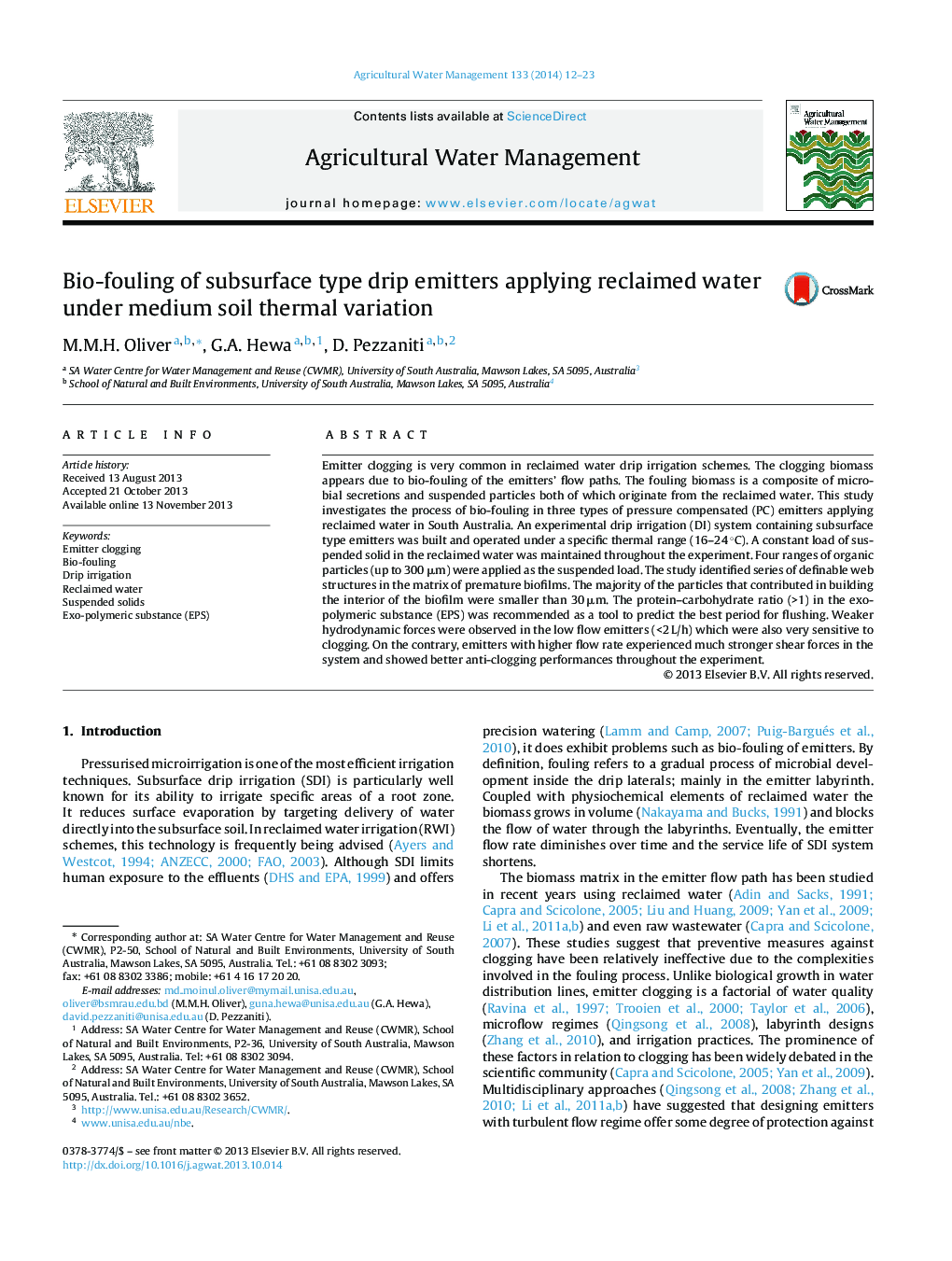| کد مقاله | کد نشریه | سال انتشار | مقاله انگلیسی | نسخه تمام متن |
|---|---|---|---|---|
| 4478684 | 1622946 | 2014 | 12 صفحه PDF | دانلود رایگان |
• Definable and unique web structures were identified in the premature biofilms.
• The structural backbone of biofilms was built by particles less than 30 μm.
• Insoluble precipitates of bicarbonate were discovered in the dried biomass.
• Weaker shear forces at the entrance of labyrinth channel caused more clogging.
• Flushing was more effective when the biomass contained lower level of carbohydrate.
Emitter clogging is very common in reclaimed water drip irrigation schemes. The clogging biomass appears due to bio-fouling of the emitters’ flow paths. The fouling biomass is a composite of microbial secretions and suspended particles both of which originate from the reclaimed water. This study investigates the process of bio-fouling in three types of pressure compensated (PC) emitters applying reclaimed water in South Australia. An experimental drip irrigation (DI) system containing subsurface type emitters was built and operated under a specific thermal range (16–24 °C). A constant load of suspended solid in the reclaimed water was maintained throughout the experiment. Four ranges of organic particles (up to 300 μm) were applied as the suspended load. The study identified series of definable web structures in the matrix of premature biofilms. The majority of the particles that contributed in building the interior of the biofilm were smaller than 30 μm. The protein–carbohydrate ratio (>1) in the exo-polymeric substance (EPS) was recommended as a tool to predict the best period for flushing. Weaker hydrodynamic forces were observed in the low flow emitters (<2 L/h) which were also very sensitive to clogging. On the contrary, emitters with higher flow rate experienced much stronger shear forces in the system and showed better anti-clogging performances throughout the experiment.
Journal: Agricultural Water Management - Volume 133, February 2014, Pages 12–23
